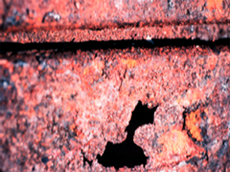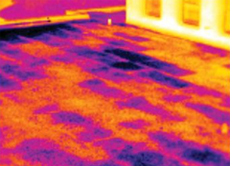
The average lifespan of a low-slope roof in the United States is about ten years, yet it should be 20 to 30 years. Why such a discrepancy? While there are more than a few factors that subtract years from the lifespan of a roof, lack of maintenance is the easiest to prevent and the most ignored aspect. Even though a low-slope roof is typically the most expensive part of a new building, it often gets neglected. Roofs, for the most part, are out of sight, out of mind. Most people do not bother with the roof until there’s a problem and by then it’s too late. Regular, bi-annual inspections can go a long way toward extending the lifespan of a low-slope roof. And while roof repairs tend to be expensive, catching the problems early on stops further degradation (that further increases the repair costs), and also stops the potentially bigger costs incurred from the damage done to whatever is inside the building getting wet.
According to the Oak Ridge National Laboratory several years ago, 75% of all roofing work done in the US in a given year is for roof repairs and replacement. These repairs can cost $4 up to $13 per square foot. When you’re talking about a 1 million square foot roof it becomes very expensive indeed! While we’re talking about costs, insurance discounts are sometimes available to building owners who have regular inspections performed on their buildings. These savings add up over the lifetime of a building.

Safety concerns are another important reason to perform regular roof inspections. When moisture gets under the roof membrane and sits on any roof deck, it will eventually degrade the deck. Once that happens, the structural integrity of the roof has been compromised. Anything heavy on top of that section of the roof has a chance of crashing through, landing on whatever is below it. This could include, but is not limited to; HVAC units, air handlers, and even people as they walk along the roof to service this type of equipment! Most building owners are eager to avoid these safety concerns. This type of accident happens every year. Regular roof maintenance is a great way to help do just that.
Wet roofs are also a cause of excessive energy consumption in buildings. Once you’ve gotten insulation wet, it’s no longer insulating as it should. The water in the insulation acts as a conductor instead of an insulator, resulting in heat loss during the winter and higher AC bills during the summer due to the HVAC system having to work harder to maintain comfortable or required ambient temperatures in the building.

These are just a few of the many reasons to conduct regular infrared inspections of low-slope roofs. Thermal imaging inspections of roofs can help find problem areas before they become serious or even catastrophic issues. Roof inspections can possibly help lower your insurance rates and energy bills. They can also keep your inventory, processes, and personnel safe. Be proactive with your roof maintenance, not reactive. Over time, it will more than pay for itself so remember to Think Thermally!® when conducting a thermographic low-slope roof inspection!